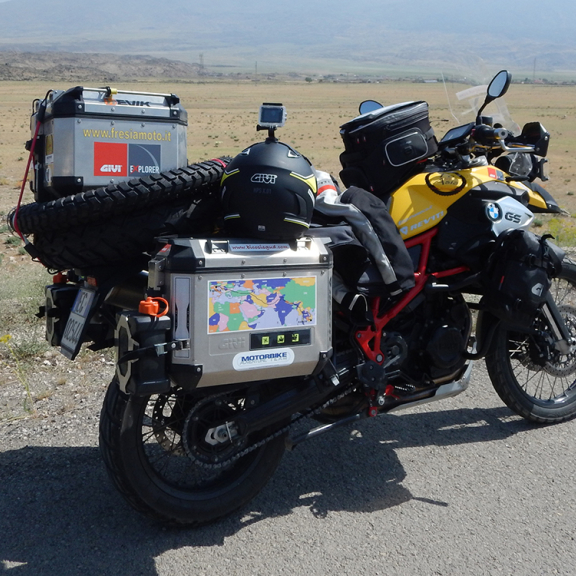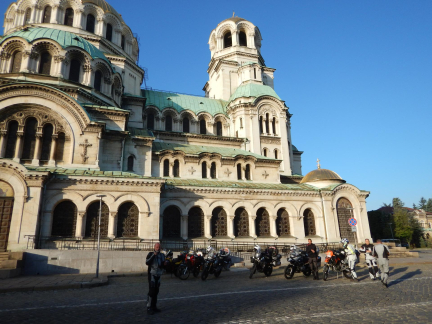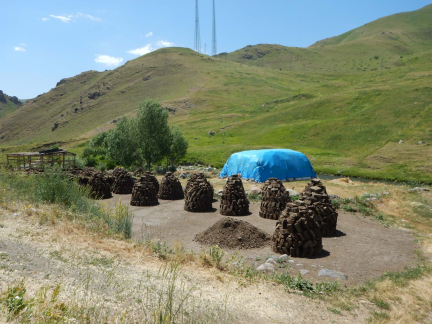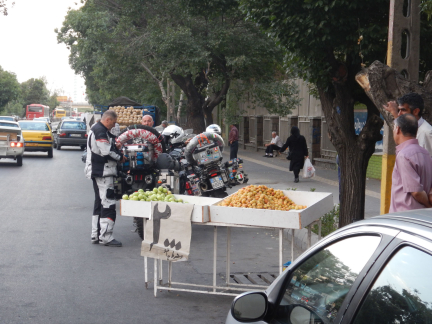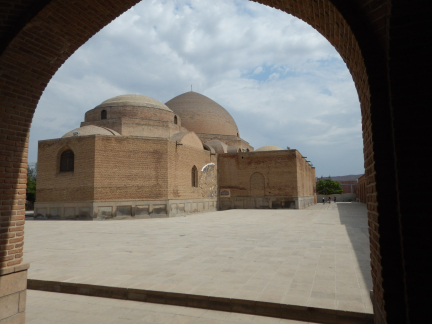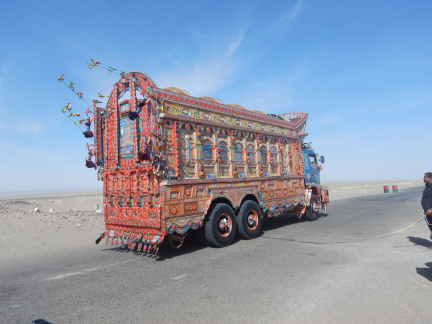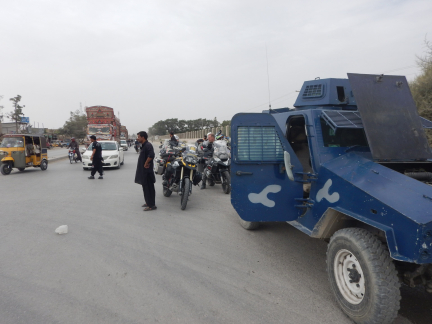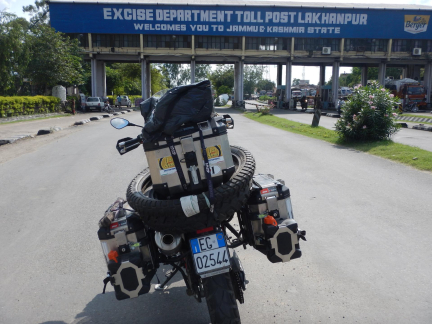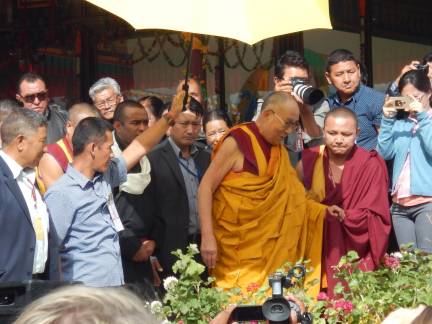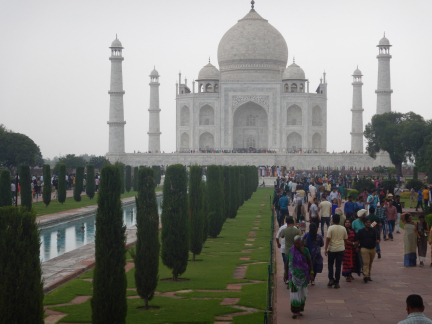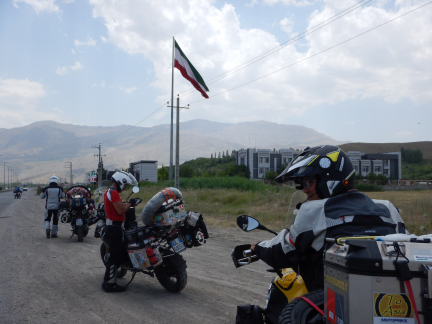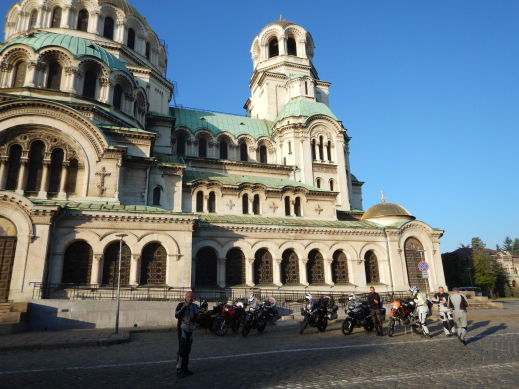Padova – India: to Asia
Motorbike ride to India
After planning and preparing the necessary documentation (visas, international licence, carnets de passage en douane etc) on 28 June the adventure began with a first stop in Slavonski Brod, the last Croatian town bordering Serbia. Maurizio and Franco encountered four motorcyclists (three Italians and one German) who were following a similar itinerary and with whom they shared much of the journey.
The Balkans and Turkey
Second stop, Sofia, the capital city of Bulgaria. Photographs of the main cathedral taken in the beautiful morning light and from imaginative angles. On the third day we reach Istanbul, gateway to the East, yet intimately connected to the Western world. Some of the must-see places are the Haghia Sofia, the Blue Mosque and the old Bazaar that has been trading continuously since 1547, with its unique maze of narrow alleyways and ancient architecture, where all the senses are smothered with the sounds, smells and colours from the past: a true spectacle. We pamper ourselves by taking a short cruise on the Bosporus and we are the only tourists on a boat packed with rowdy locals. After two days spent strolling around the city, we left for a 700km ride through the sweltering Turkish plateau and ended up in Amasya, ancient Ottoman capital city on the bank of the River Yesil. Dug into the rock and lit up at night, the graves of the first Emirs are a must-see. Below them, the white Ottoman houses built in wood: truly evocative! Unfortunately, the Dominator had a problem with the chain which meant Franco had to stop to repair it. Initially, we thought it was nothing to worry about, but it took 5 days before Franco could continue with the journey as he had to wait for a spare part to arrive from Italy. So in the meantime I continued with the trip and we arranged to meet up again a few days later.
Along with other motorcyclists, I hit the road early in the morning and indulged myself with a “Turkish” breakfast consisting of honeycomb, some sort of mascarpone cheese, bread and “chai” (the word for “tea” used in many countries). The stopover is at nearby Erzurum, at a mediocre motel. Along the way I spot some weird mounds which are made from animal dung that is left to dry out. During the winter months the dung mounds are used by impoverished locals as a source of fuel for their homes which are located 1,600-1,700m above sea level. The following stop at Dogubeyazit was rather fascinating. With a largely Kurdish population, it is the eastern most district bordering Iran. In respect of our accommodation, it was not the most beautiful place on earth but it was comfortable, situated right in the middle of the central market, in the throbbing heart of the district. The following morning, before crossing the border that I had already crossed three times previously, I head south to visit the Fortress of Ishka Pasha. Dating back to 1784 it is built in a variety of different styles as its construction started centuries before its final completion. I experienced a truly unique meeting with two elderly locals running a nearby kiosk who were keen to make it clear to me that they are totally Kurdish, not Turkish at all!
Iran and Pakistan
Some twenty kilometres to the north and not too far from the border with Iran, there is a perfect view of the volcanic cone of Mount Ararat, with an elevation of 5700m it is permanently snow-capped.
The Rogue State, instigator of terrorism, nuclear danger to the West. None of which is evident while crossing Iran. For us and everybody who has ventured this way, walked these streets and known these people, the only memory left in our minds is that of a safe and peaceful country that is organised, very civilized and rich in monuments. Its people are smiling, friendly and willing to help at any time.
It is a smooth process crossing the Bazargan border and after waiting behind a long line of trucks, which is common at Asian borders, I see a huge tricoloured flag featuring the same colours as our Italian flag, yet placed horizontally and the latter welcomes us into ancient Persia. Refuelling the tank is something unbelievable as petrol costs just 1 Euro for 3 litres. After having the opportunity to purchase some excellent fruit, I head to Tabriz in temperatures of 45-47°.
Find our hotel, supper at a lovely local restaurant and then off to bed to get ready for the following day. I visit the famous bazaar, hang around with locals at the El Joli park and we are charged 150.000 Rials (a little more than 3 Euros) to see the mosque that contains 100 different inscriptions of the name Allah. People here are quiet and inquisitive, like those in the other cities through which we will be travelling.Hamadan, Isfahan with its charming Naqsh e-Jahan Square, where Franco and I meet up again after he arrives following the repairs to his chain, Shiraz and the nearby archaeological site of Persepolis, the ancient capital of the Achaemenid empire, Kermen, Bam, all located in the Southern part of Iran close to the desert. We continue riding together in the hottest temperatures, yet we will never forget how amicable people are here, the mosques, bridges, palaces, squares, markets, monuments, everything is linked to a people that is rich in both history and culture.After Bam and its muddy citadel, almost entirely rebuilt after the 2003 earthquake, we drive along the lengthy and straight roads of the Baluchistan desert.
This is the road, outside Zahedan, that will lead us to the border with Pakistan. We thought it was (and it proved to be) the real danger on this journey. In the stretch from the border to the Pakistani city of Quetta it is not unusual to run into the Taliban, who come from neighbouring Afghanistan, bringing death and devastation. This is why after Mirjaveh (at the Iran-Pakistan border) we are taken over by the Levies escort (a sort of armed regional militia) and under escort we will travel for the next seven days to the capital Islamabad. We sleep under the arcades or on the rooftops of the barracks (bloodily bitten by sand flies or among cockroaches), in small local “hotels” or nearby petrol stations. We ride through sand dunes that encroach upon the roadway (with subsequent falling due to the heavy load of our motorcycles), through sandstorms, changing every day, or even more than once a day, with the armed escort leading us. Two episodes in particular affected us at the Levies barrack in Taftan. About fifty Afghan refugees arrive just before sunset (their final destination being Iran, or Europe from there).
It is extremely difficult to tolerate the way they are treated, set upon, shouted at and beaten. About 30km from Quetta, in a mountain gorge, a truck had rolled over four motorcycles before being pulled over by our escort. We will never know whether it was an accident or an attack as the young Taliban driver was “high” and would not utter a single word. In Islamabad we meet our host, Santo, a member of the Italian Carabiniere who was on active duty at the Italian embassy. He is also a collector of Vespa Piaggio manufactured in Pakistan. We had a feast with some scrumptious pastas with Italian sauces. From there we will return to Lahore to cross the border with India.
India
The Indian subcontinent: a tangled mass of races, religions, climates and landscapes. A complex ensemble where tradition and modernism intertwine, where the streets are perpetually clogged with cars, colourful trucks, animals, carts, rickshaws, a variety of merchandise and people, some wearing traditional clothes, some wearing western clothes and some not wearing any clothes at all!
We have crossed just the northern part of India (the States of Punjab, Jammu and Kashmir, Himachal Pradesh, Uttar Pradesh, the territory of Ladakh and the Federated District of Delhi) and this area alone has been difficult but exceedingly rewarding.
At the border between Pakistan and India we are welcomed by soldiers in very special uniforms and entry procedures prove to be rather slow and complex. The roads that lead us from Punjab to Jammu and Kashmir are different and perhaps this is due to the area having the highest concentration of military barracks in the world. Here we glimpse the frightful traffic that never seems to fade. Our arrival and our stay in Srinagar is lovely, it is the capital of the region which sits on the shore of Lake Dal. For 3 days we stay in a most beautiful houseboat moored on the lake. With interiors made from luxurious ebony wood, equipped with everything we need and comfortable and all for an absolutely ridiculous price.
Leaving Srinagar we begin to ride at a higher altitude and for 3 days we continually ride at altitudes ranging between 3500 and 4000 meters, between rain and low clouds and steps to almost 5000 meters, with numerous “stupas” (Buddhist shrines) and “gompas” (Tibetan monasteries) along the way, the Himalayan mountains on our right and the Ladakh Range on our left. Our arrival in Leh (the capital of Ladakh) is preceded by the occurrence of several landslides originating from snow melting at high altitude. When this happens, all road-users leave their vehicles and with bare hands they attempt to build a passage with rocks, on which cars, motorcycles and even trucks, can pass carefully. In Leh, a mythical town of 30,000 inhabitants located between the Tibetan, Hindu and Islamic cultures, we are fortunate enough to meet His Holiness Tenzin Gyatso, the 14th Dalai Lama who is currently on a “pastoral” visit to his people. A gathering of 3000 monks wearing red tunics rush to hear his words. After leaving the meeting with His Holiness, the engine in my motorcycle begins to make “knocking” sounds. It may be a problem with the fuel pump but unfortunately this model is not imported to India and obtaining a new pump from Europe would take more than 15 days which is too long to wait.
Unfortunately, therefore, my journey ends here. My BMW is loaded onto a truck and four days and three mountain passes later, it arrives in Delhi and from there it will be returned to Italy. Meanwhile, Franco continues his journey to South East Asia alone. On one hand the dream of Ho Chi Minh City is fading, but on the other hand a great opportunity presents itself: learn more about Leh with its royal palace, outdoor market, its Tibetan people and the real life of a city which, like Delhi, has 16 million inhabitants. Visitors can choose not to stay in one of the sanitised hotels near the airport aimed at western tourists but instead, they can choose to stay in the Bagh (slums) that throb with the life of its inhabitants with is open sewers and mountains of waste, where sacred cows “graze”, its appalling traffic (4-5 lanes for each direction of travel where vehicles move at 10-20km per hour) but also the general abundance and variety of humanity. An excursion to Agra (in Uttar Pradesh), visiting the Taj Mahal (the most symbolic Indian monument in the world), is the icing on the cake of an intense, magical journey, fully lived by two Italian motorcyclists.
The protagonists
Franco and Maurizio
The protagonists
Franco and Maurizio
Born in 1966 in Cuneo, Italy, founder bassist of the band Marlene Kunz has travelled to more than 100 countries, riding different vehicles. His name is Franco Ballatore and his motorcycle is a 1992 Honda Dominator 650. Born in Padua and 61 years of age, he is a Physical Education teacher. He has crossed all five continents on his motorcycle. His name is Maurizio Pistore and he is riding his 2016 BMW F800GS (2017 model).
Back in 2013, while in Santiago de Chile, the two men met for the very first time. After a long American coast-to-coast journey, Franco was heading south on the Pan-American Highway riding his LML Star 200, while Maurizio was on the third leg of his solo world tour (having already travelled to Africa and Australia), riding his Quadro 350S. In Italy, sometime later, the two men met again and became friends. They decided to set off together travelling overland to Ho Chi Minh City in Vietnam, crossing the entire Asian continent on their motorcycles.
Motorcycle equipment
like an adventure
To complement this new adventure, the Italian company, GIVI, was in charge of embellishing the motorcycles with the addition of saddlebags, top case, tank bag , rainproof jerry cans and rather fittingly, the Givi Modular Helmet for the two riders.
To complement this new adventure, the Italian company, GIVI, was in charge of embellishing the motorcycles with the addition of saddlebags, top case, tank bag , rainproof jerry cans and rather fittingly, the Givi Modular Helmet for the two riders.

